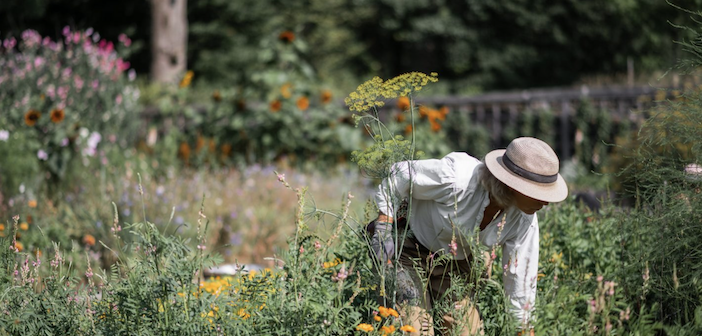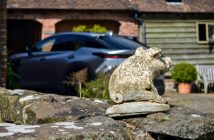In the second part of her tour around Gothenburg, having encountered lagom, Sarah Tucker seeks a deeper understanding of what makes this region tick…
It was during this road trip through the rural landscape around Gothenburg, I discovered the concept of Fike (fee-ka) for which the region is famous. It is a legal (literally and figuratively) obligation for everyone to down tools (metaphorical or not) and take coffee and cake for fifteen minutes mid-afternoon. And the employer has to provide the cake. Think about that. ‘Legalised’ cake, on the house.
So, you can have your cake and eat it. It doesn’t have to be grand, but on my tour, I encountered what I could only describe as uber fike, where what was on offer would feed the five thousand. And yet, the Swedes, rather than being the size of houses, were all svelte. Svelte Svenska, if you will. I was told this is due to the outdoor lifestyle, the healthy attitude towards life and food; it was all part of ‘lagom’.
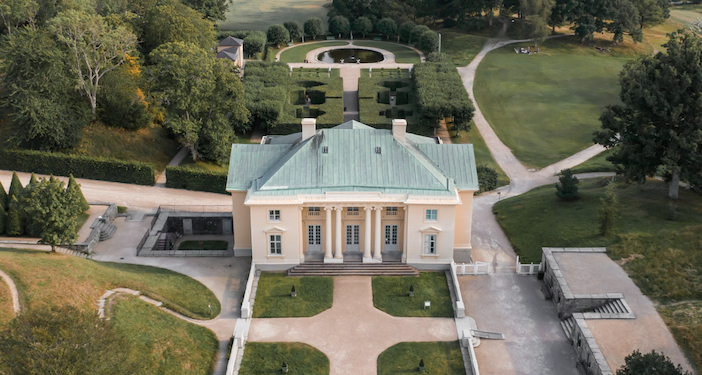
Many people who visit the region come purely for the gardens. It seems to be a national pastime here. The estate at Gunnebo, which is dominated by the grand manor house, designed by local architect Carl Wilhelm Carlsberg, is one of the most complete 18th century estates in Scandinavia.
There’s a Versailles feel to it, evoked also by its stunning formal gardens meandering down to the lakes of Stensjön and Rådasjön. Originally a summer residence for Gothenburg businessman John Hall, as well as being an attraction in its own right, it is also now a horticultural school which attracts people throughout Sweden who come to be accredited as professional gardeners. And, just as they did in Erikson Cottage and Hemma på Källebacka, all food served in the estate’s café is locally and seasonally sourced.
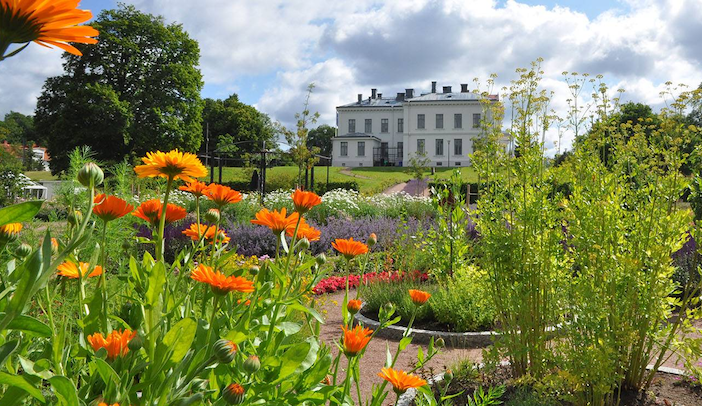
The gardens at Jonsered include a section where Swedish celebrities can input into the design. I may not have recognised the names, but you can certainly tell their handiwork; a rock star chose something quite wild and out of the box, a greenhouse without glass; a comedian created a garden with an outdoor privy (in stylish and Farrow and Ball-esque colours); and a romantic novelist included a scarecrow in her garden with a mini ruin. You could certainly see the storytelling in the landscape. Fortunately, it’s all tastefully done, celebrities aren’t set wild among the bushes, as it were; the gardener, Peter Svensson, modestly told me he guides them as to what planting will work.
As well as crafting horticulture, they’re also taming it. The beautifully renovated Årås Säteri, a stunning manor house, once overcome by the wild, has now been almost completely reclaimed from the wilderness. Its annexes have been completely restored, and features in the main house are continually being rediscovered, unearthing the likes of mosaics and original tiled floors. Jens Böhm, the man whose inspiration it was to restore the area and bring together the community in doing so, is a positive pied piper. You would follow him anywhere; such is the passion and love he has put into returning the buildings and gardens to their former glory.
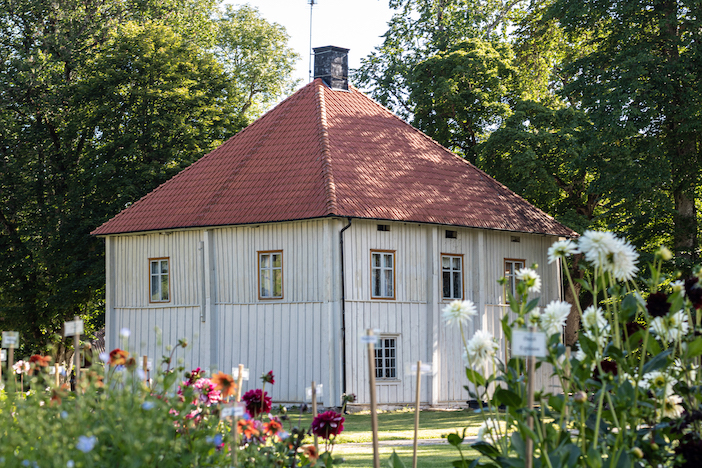
It’s full of quirks, too, even mischief. Within one annexe, the bridal suite sits adjacent to the mother-in-law’s bedroom. On the veranda in between sits an original spinning wheel. This is Sleeping Beauty land. There’s even an imaginative playground for children calved from the trees, some of which are hundreds of years old, and I’m sure they could tell a fairytale or two. It’s a place that has been filled with love. You can tell by the way Jens and Fia Böhm talk about it, and the pace of living. It is not so slow nothing gets done, but also not so fast that you don’t appreciate what you have. Its baby porridge – just right. You might even call it lagom.
My last stop was at Näss Slott, slott being castle, though was more a manor house. Here, again, I seemed to have an issue with doors – what is it with Swedish houses and doors? – and this time exited through the kitchen window. I’m told my room was owned by the famous children’s author Selma Lagerlöf, and I sensed she was having a joke with me.
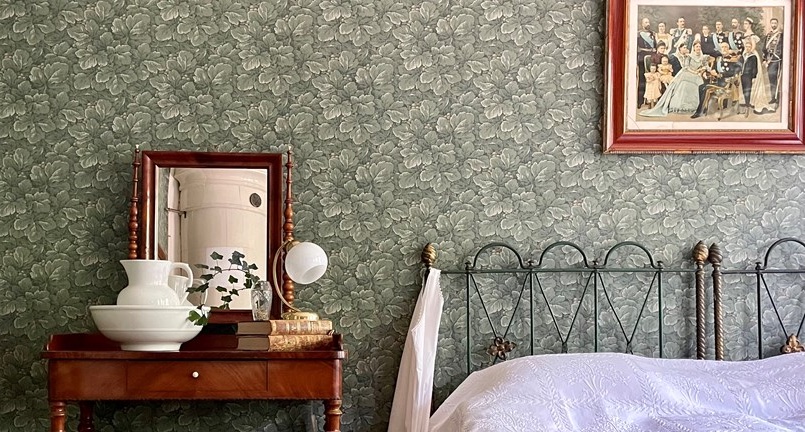
The history behind the house is of a man who loved life, loved his wife and loved the property. He was a visionary – one of the first to install an indoor loo – and the heating is state of the art. It’s full of quirks, as you might expect, such as in the kitchen the last recipe that was ever cooked remains chalked onto a blackboard. The former owners’ beloved dog was stuffed and is on display. Each window frame is a painting ready to be made eternal.
As you walk around all its rooms and hallways, it is still a living and breathing entity; as well as being a place to stay, there is a craft school where people are able to do woodwork and weave and knit. They also cater for those also who have mental health issues. It’s a place to restore, rewind, reset. To live and learn to love life – and yourself – again.
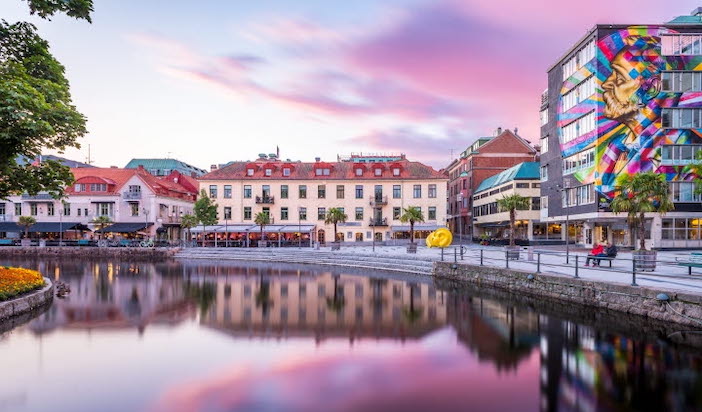
Boras (photo courtesy of Visit Sweden)
This is a region of creativity, which comes to the fore in Borås, a city which has recently been identified as the fastest growing tourist city in Europe. You walk among the most incredible street art, perched in unexpected places; tall apartments blocks covered in green lace, a sculpture park of mini worlds and inventive installations, encouraging people to consider perspectives. Even the Viskan river running through the city has art emerging from unexpected quarters, and within walls and under benches you will find miniatures that make you pause for thought.
This approach to art continues at the Borås Konstmuseeum. While I was there an exhibition ran on the theme of lines, loops and layers, again looking at the issue of sustainability from different angles, and how artists from around the world interpret timelines, and repetition and the concept of overlapping ideas. It encourages you to break the pattern of what you may have thought suited you. To slow down and enjoy every moment, every taste sensation, embrace every unexpected twist in the road and challenge you’re faced with; even if that might be how to exit a room with a faulty door.
How I wish someone would invent a hotel where you could only enter through the windows…
Direct flights to Gothenburg from the UK are available with Norwegian starting from £44.90 one way and British Airways starting from £43 one way. More information on the area is available from www.westsweden.com and www.visitsweden.com.
Header photo: Gardeners at Gunnebo (courtesy of Gunnebo)

